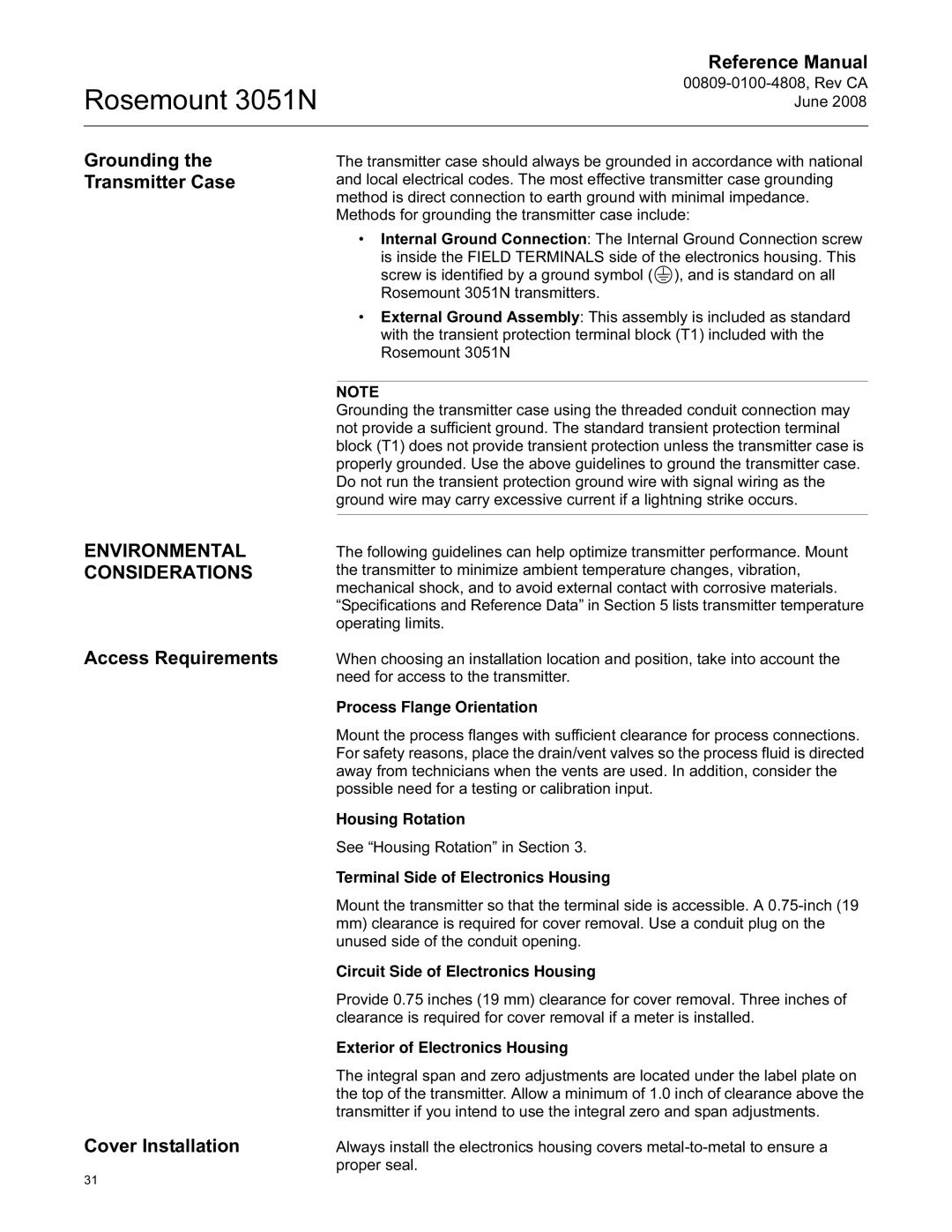
Rosemount 3051N
Reference Manual
Grounding the Transmitter Case
ENVIRONMENTAL CONSIDERATIONS
Access Requirements
Cover Installation
The transmitter case should always be grounded in accordance with national and local electrical codes. The most effective transmitter case grounding method is direct connection to earth ground with minimal impedance. Methods for grounding the transmitter case include:
•Internal Ground Connection: The Internal Ground Connection screw
is inside the FIELD TERMINALS side of the electronics housing. This screw is identified by a ground symbol ( ![]() ), and is standard on all Rosemount 3051N transmitters.
), and is standard on all Rosemount 3051N transmitters.
•External Ground Assembly: This assembly is included as standard with the transient protection terminal block (T1) included with the Rosemount 3051N
NOTE
Grounding the transmitter case using the threaded conduit connection may not provide a sufficient ground. The standard transient protection terminal block (T1) does not provide transient protection unless the transmitter case is properly grounded. Use the above guidelines to ground the transmitter case. Do not run the transient protection ground wire with signal wiring as the ground wire may carry excessive current if a lightning strike occurs.
The following guidelines can help optimize transmitter performance. Mount the transmitter to minimize ambient temperature changes, vibration, mechanical shock, and to avoid external contact with corrosive materials. “Specifications and Reference Data” in Section 5 lists transmitter temperature operating limits.
When choosing an installation location and position, take into account the need for access to the transmitter.
Process Flange Orientation
Mount the process flanges with sufficient clearance for process connections. For safety reasons, place the drain/vent valves so the process fluid is directed away from technicians when the vents are used. In addition, consider the possible need for a testing or calibration input.
Housing Rotation
See “Housing Rotation” in Section 3.
Terminal Side of Electronics Housing
Mount the transmitter so that the terminal side is accessible. A
mm)clearance is required for cover removal. Use a conduit plug on the unused side of the conduit opening.
Circuit Side of Electronics Housing
Provide 0.75 inches (19 mm) clearance for cover removal. Three inches of clearance is required for cover removal if a meter is installed.
Exterior of Electronics Housing
The integral span and zero adjustments are located under the label plate on the top of the transmitter. Allow a minimum of 1.0 inch of clearance above the transmitter if you intend to use the integral zero and span adjustments.
Always install the electronics housing covers
